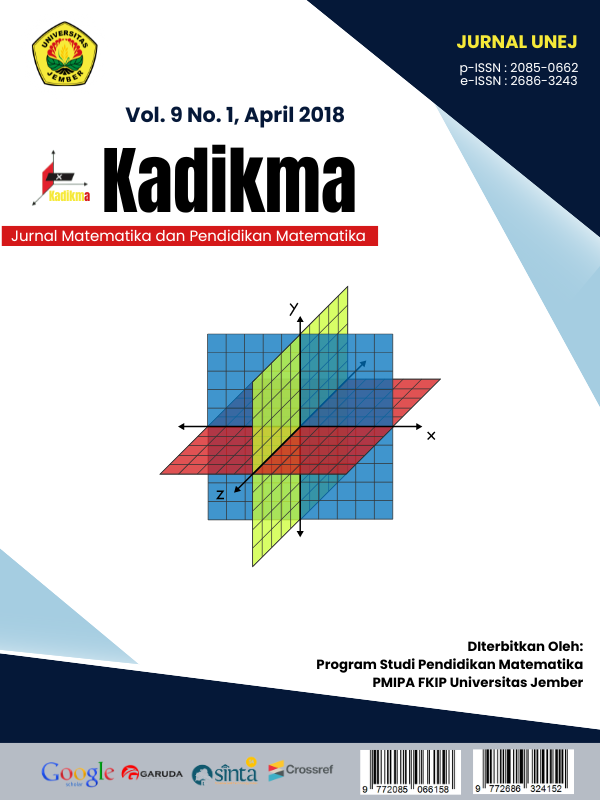ETNOMATEMATIKA PADA PURA MANDARA GIRI SEMERU AGUNG SEBAGAI BAHAN PEMBELAJARAN MATEMATIKA
DOI:
https://doi.org/10.19184/kdma.v9i1.8441Abstract
This research aims to describe the ethnomatematics of carving on the buildings in the Mandara Giri Semeru Agung Temple as geometry transformation learning. The type of this research is qualitative descriptive research. The data collection methods of this reasearch are observation and interview. The subjects of this reasearch are two temple builders and one religian of Hindu. The results of this reasearch showed that there are etnomatematics on the buildings in the Mandara Giri Semeru Agung Temple and produce summary of the worksheets of students based on ethnomatematics. Waringin Lawang Temple has an element of reflection. Kurung Temple has an element of congruence. Padmanabha has an equilateral triangle shape. Bale Ongkara has a square pyramid roof. Bale Gong has a prismed roof shape. Meru has a pyramid shape. The carvings in various buildings of Pura have reflection elements (reflection on X axis, reflection on Y axis), translations (X-axis and Y-axis translation), and rotation (180 degree rotation through origin). The learning materials obtained in this research is a summary of student worksheets on the geometry transformation, similarity, congruency, plane and space.
Keywords: Etnomathematics, Geometry Transformation, Similarity, Congruency, Space


.png)
.gif)




